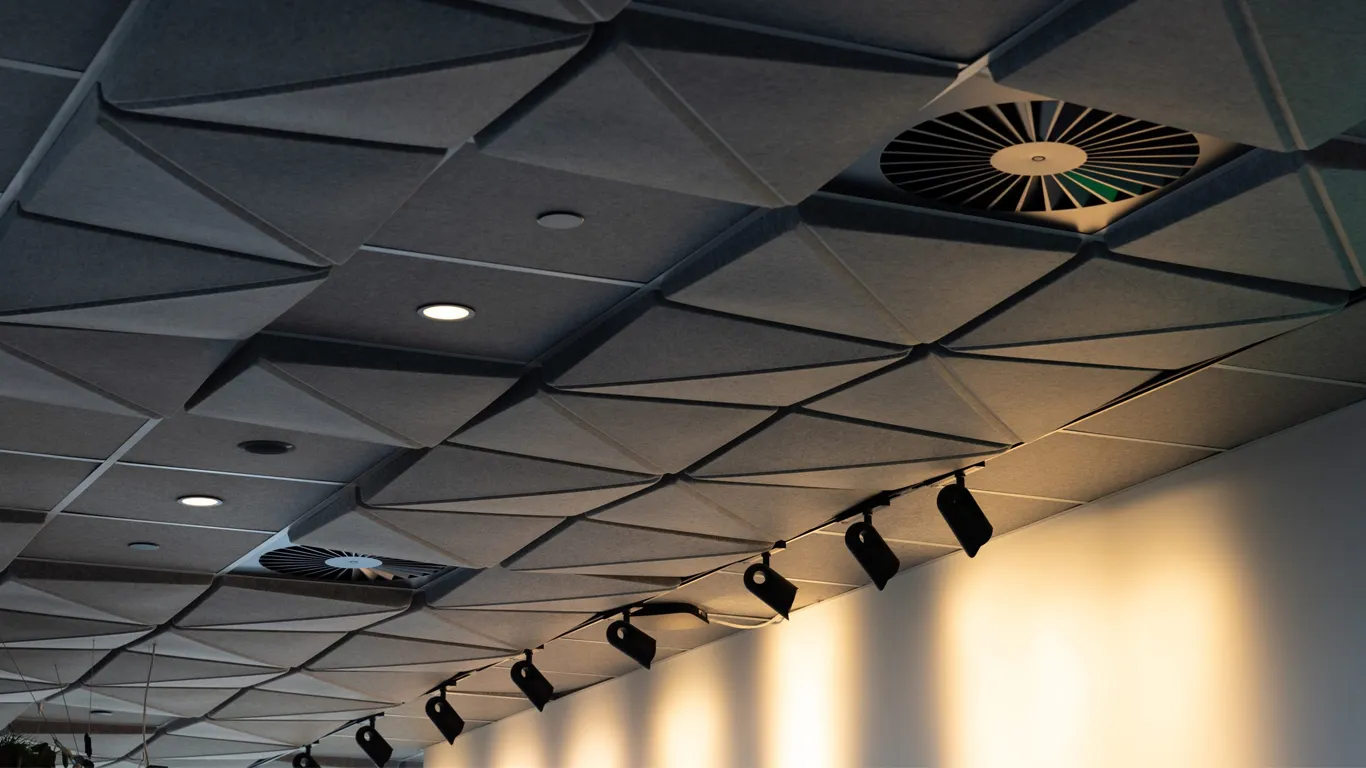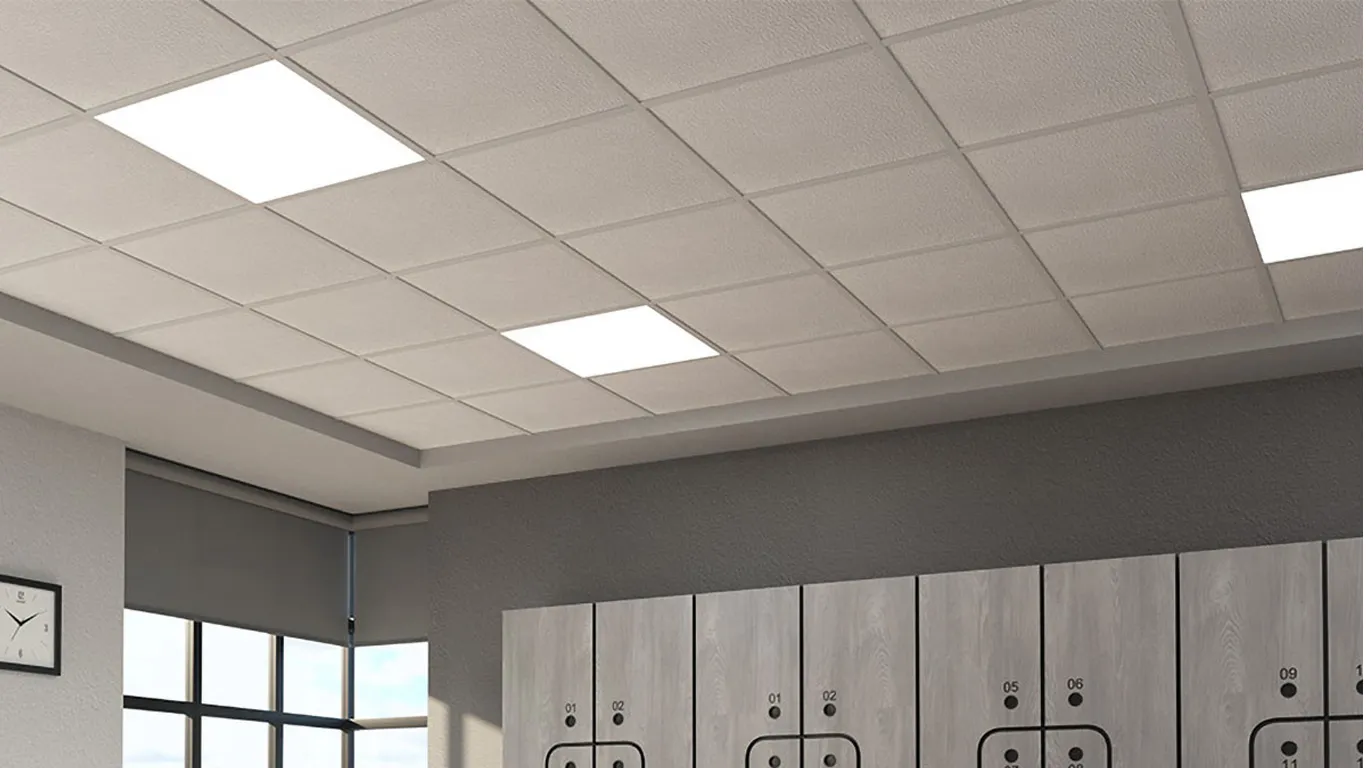Soundproofing is a critical consideration in both residential and commercial spaces, significantly impacting comfort, productivity, and privacy. Two common options for soundproofing ceilings are acoustic ceiling tiles and drywall. Each has its unique properties, benefits, and limitations. At Harlie Harper, we understand the importance of making an informed decision when it comes to enhancing the acoustic performance of your space. This comprehensive guide compares acoustic ceiling tiles and drywall to help you determine which is better for soundproofing your environment.
Both acoustic ceiling tiles and drywall offer unique advantages for soundproofing, depending on the specific needs of your space. Acoustic ceiling tiles excel at absorbing sound and improving acoustics within a room, making them ideal for open-plan offices, classrooms, and public spaces. On the other hand, soundproof drywall is superior at blocking sound transmission between rooms, providing privacy and preventing noise from traveling between areas.
At Harlie Harper, we are committed to helping you find the best soundproofing solutions for your environment. Whether you choose acoustic ceiling tiles or drywall, our expert team can provide guidance and high-quality products to ensure optimal acoustic performance and aesthetic appeal. Explore our range of soundproofing solutions and transform your space into a quieter, more comfortable environment.

Understanding Acoustic Ceiling Tiles
Acoustic ceiling tiles are specifically designed to improve sound quality by absorbing and reducing noise. They are commonly used in commercial settings, such as offices, schools, and hospitals, but can also be beneficial in residential applications.
Key Features:
- Sound Absorption: Acoustic tiles are made from materials with high sound-absorbing properties, such as mineral fiber, fiberglass, and foam.
- Noise Reduction Coefficient (NRC): This rating measures a material’s ability to absorb sound. Higher NRC values indicate better sound absorption.
- Installation Flexibility: Acoustic tiles can be installed in a suspended grid system (drop ceiling) or mounted directly to the existing ceiling.

Understanding Drywall
Drywall, also known as plasterboard or gypsum board, is a common building material used for constructing interior walls and ceilings. While standard drywall has some sound-dampening qualities, specialized soundproof drywall is available for enhanced acoustic performance.
Key Features:
- Sound Transmission Class (STC): This rating measures a material’s ability to block sound transmission. Higher STC values indicate better soundproofing.
- Mass and Density: Soundproof drywall is denser and heavier than standard drywall, providing better sound isolation.
- Installation Process: Drywall is typically screwed or nailed to the ceiling joists and can be combined with insulation and resilient channels for improved soundproofing.

Acoustic Ceiling Tiles: Advantages and Disadvantages
Advantages:
- High Sound Absorption: Acoustic ceiling tiles are excellent at absorbing sound, reducing echo, and improving overall sound quality. This makes them ideal for environments where clear communication and noise reduction are essential.
- Ease of Installation: Acoustic tiles, particularly those in a suspended grid system, are relatively easy to install and can be done without extensive structural changes.
- Access to Utilities: Suspended ceilings allow easy access to electrical and mechanical systems, making maintenance and repairs more convenient.
- Design Flexibility: Acoustic tiles come in various styles, colors, and textures, allowing for customization to suit different interior designs.
Disadvantages:
- Lower Sound Blocking: While acoustic tiles excel at absorbing sound, they are less effective at blocking sound transmission between rooms compared to heavier materials like drywall.
- Space Requirements: Suspended ceiling systems require additional space below the existing ceiling, which may not be suitable for rooms with low ceilings.
- Maintenance: Acoustic tiles may need regular maintenance and cleaning to prevent dust buildup and maintain their aesthetic appeal.

Drywall: Advantages and Disadvantages
Advantages:
- Effective Sound Blocking: Soundproof drywall, especially when combined with insulation and resilient channels, provides excellent sound isolation, preventing noise from traveling between rooms.
- Durability: Drywall is a robust and durable material that can withstand wear and tear, making it suitable for various environments.
- Smooth Finish: Drywall provides a smooth and seamless finish that can be painted or textured to match the room’s decor.
- Cost-Effective: Standard drywall is relatively inexpensive, and even soundproof drywall can be a cost-effective solution for soundproofing when compared to other specialized materials.
Disadvantages:
- Limited Sound Absorption: Standard drywall does not absorb sound effectively, which can result in increased echo and poor sound quality in the room.
- Complex Installation: Installing drywall, particularly soundproof drywall, can be labor-intensive and may require professional installation to achieve optimal results.
- Limited Access: Once installed, drywall does not allow easy access to electrical and mechanical systems, making maintenance and repairs more challenging.
- Weight: Soundproof drywall is significantly heavier than standard drywall, which may require additional structural support during installation.
Comparing Acoustic Ceiling Tiles and Drywall for Soundproofing
When deciding between acoustic ceiling tiles and drywall for soundproofing, it’s important to consider the specific needs and characteristics of your space. Here are key factors to compare:
Sound Absorption vs. Sound Blocking:
- Acoustic Ceiling Tiles: Excellent for sound absorption, reducing echo, and improving sound quality within a room. Ideal for open-plan offices, classrooms, and public spaces where reducing noise levels is crucial.
- Drywall: Superior at blocking sound transmission between rooms. Best suited for spaces where privacy and preventing noise from traveling between areas are priorities, such as bedrooms, home theaters, and offices with shared walls.
Installation and Maintenance:
- Acoustic Ceiling Tiles: Easier to install, especially in a suspended grid system. Provides easy access to utilities but may require regular maintenance and cleaning.
- Drywall: More complex and labor-intensive installation, particularly for soundproof drywall. Provides a seamless finish but limits access to utilities and may require professional installation.
Aesthetic and Design Flexibility:
- Acoustic Ceiling Tiles: Available in various designs, colors, and textures, allowing for customization to enhance the interior decor.
- Drywall: Offers a smooth and versatile surface that can be painted or textured to match any design aesthetic.
Cost Considerations:
- Acoustic Ceiling Tiles: Can vary in cost depending on the material and design. Installation costs may be lower due to the ease of installation.
- Drywall: Standard drywall is generally less expensive, but soundproof drywall can be more costly. Installation costs may be higher due to the labor-intensive process.

Choosing the Right Solution for Your Space
The choice between acoustic ceiling tiles and drywall ultimately depends on the specific requirements of your space and the primary goals for soundproofing. Here are some scenarios to help guide your decision:
When to Choose Acoustic Ceiling Tiles:
- Improving Sound Quality: If the primary goal is to improve sound quality within a room by reducing echo and noise levels, acoustic ceiling tiles are the better option.
- Ease of Installation and Access: If you need a solution that is easy to install and allows for easy access to utilities, acoustic ceiling tiles are ideal.
- Design Flexibility: If you want to enhance the aesthetic appeal of your space with customizable designs, acoustic ceiling tiles offer more options.
When to Choose Drywall:
- Blocking Sound Transmission: If the main objective is to prevent sound from traveling between rooms, soundproof drywall is the more effective choice.
- Durability and Seamless Finish: If you need a durable, smooth finish that can be painted or textured, drywall is preferable.
- Cost-Effective Solution: If you are looking for a cost-effective soundproofing solution, especially for larger areas, drywall may be more economical.




